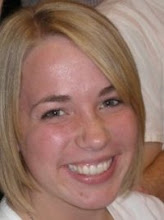- Reader's Theatre Photostory: To help teach students about reading with emotion and prosody, have students make a photostory of a reader's theater. During the process of making the story, play back voice recordings so that students can see if their reading sounds boring or if it sounds exciting.
- Photostory Read Aloud: To make the illustrations of a book more accesible to students a photostory can be created of the book and then projected on to a screen.
Internet Safety Teaching:
I talked with my mom who is 47. I shared with her some ideas about what she can do to help her family use the internet safely. I shared with her the importance of talking to family members about internet safety measures and setting family standards for internet use. I emailed my mom the URLs for three of the articles that we read. She was grateful for the resources and the information I shared with her. She was already aware of some of the guidelines the church has given about internet safety and uses them. Talking to her was pretty easy and I hope that she will implement some of the things that we talked about.








